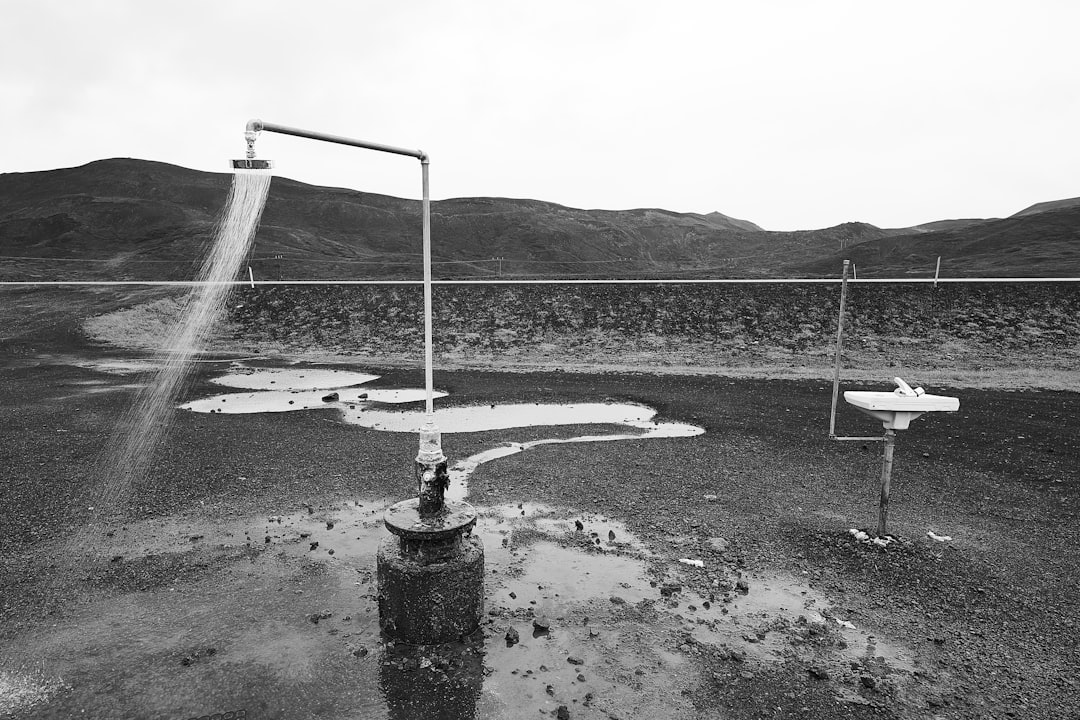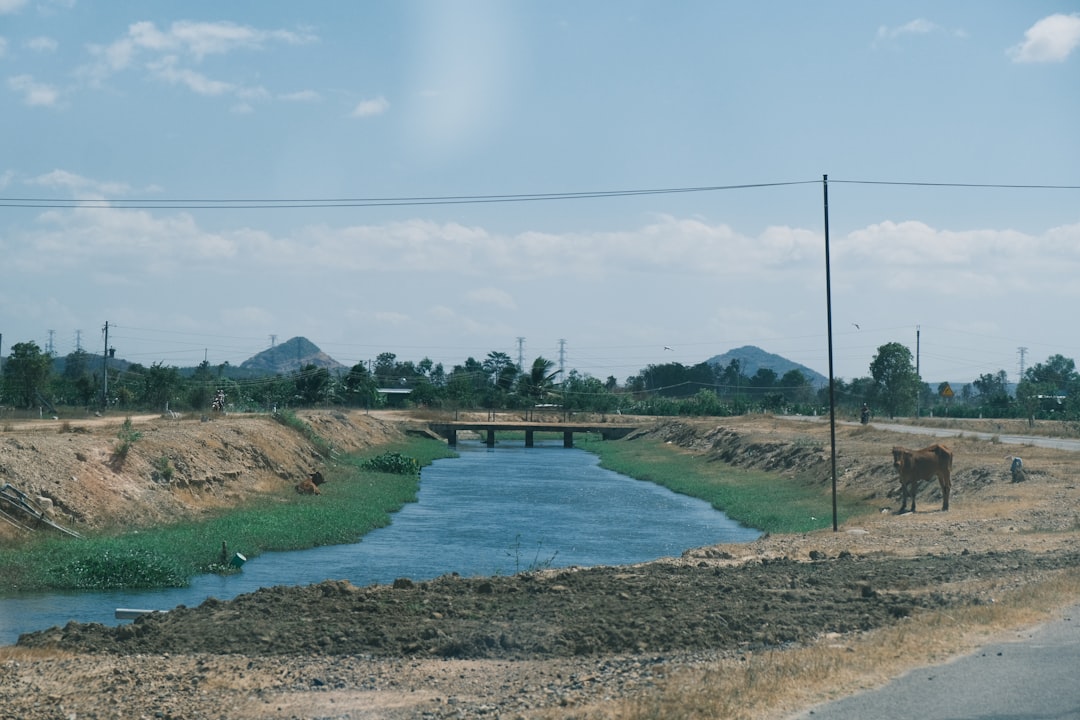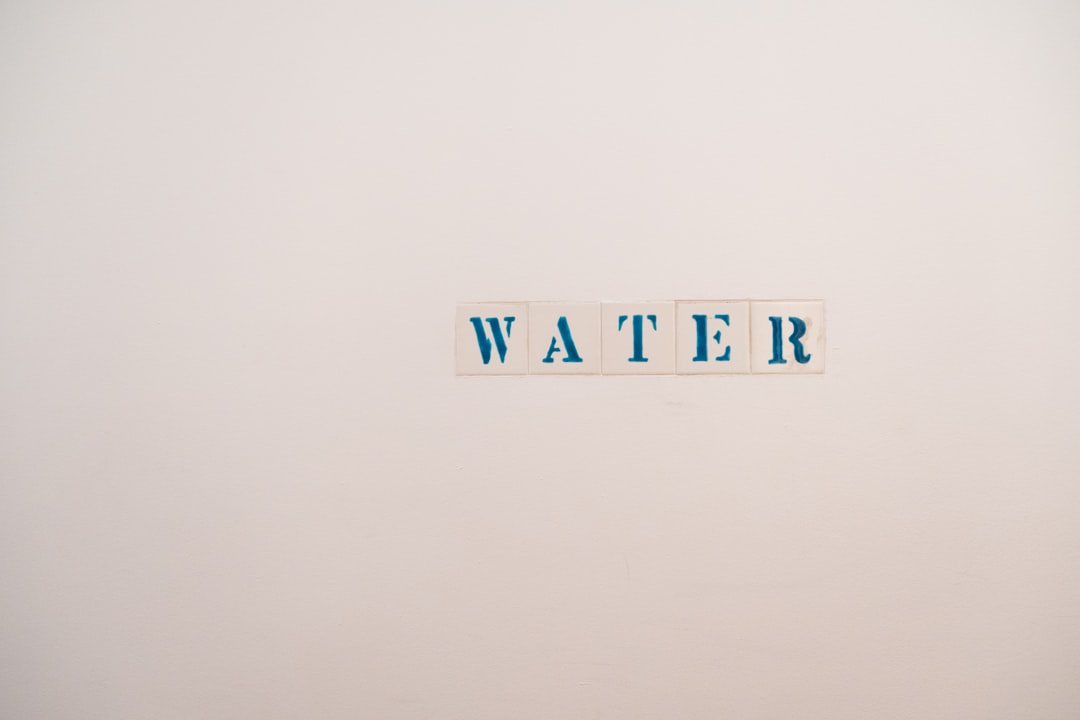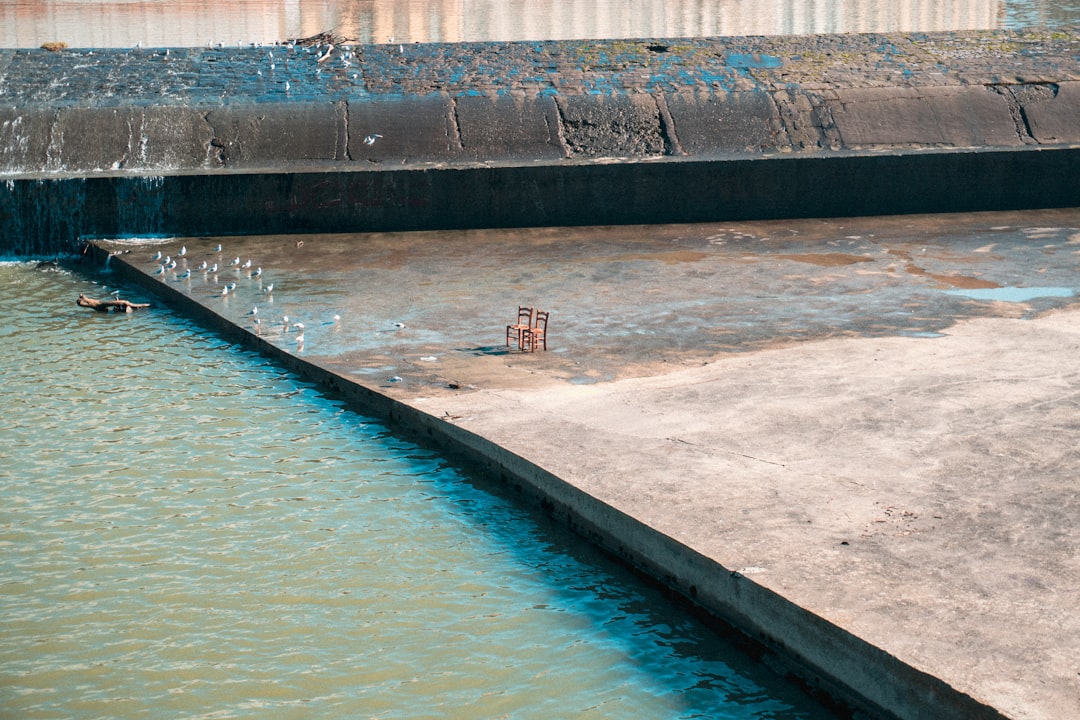

Engage prospects with a scan and streamline customer engagement with FREE QR code marketing tools by Sona – no strings attached!
Create a Free QR CodeFree consultation

No commitment

Engage prospects with a scan and streamline customer engagement with FREE QR code marketing tools by Sona – no strings attached!
Create a Free QR CodeFree consultation

No commitment
QR codes have evolved from a novelty to a strategic powerhouse, bridging offline engagement with online action and helping water main contractors overcome common barriers in service delivery. Slow lead capture, inefficient follow-up, and disconnected field operations can derail business growth. Well-designed QR code programs offer a frictionless way to streamline service access, connect fieldwork to digital platforms, and enable faster customer response without the need for specialized apps or complex setups.
Plumbing and water main contractors face increasing competition, tighter margins, and high expectations for responsiveness. Traditional methods often lead to missed high-value prospects, especially if potential clients interact with field signage or print materials but never complete a web form, consistent with recent contractor marketing guidance. QR codes offer water main contractors a direct, trackable path to digital forms, project tracking, and instant information sharing, making each customer interaction both measurable and meaningful.
This article shows how water main contractors can leverage QR codes to modernize their customer acquisition strategies, improve operational workflows, and drive measurable growth. You will find actionable steps, best practices, and real examples of how leading contractors use QR solutions to improve installation, maintenance, and emergency response while addressing challenges like anonymous traffic. Sona is an AI-powered marketing platform for identity, attribution, and activation; see Sona’s account identification for anonymous traffic, incomplete lead tracking, and attribution uncertainty.

In the field, water main contractors often struggle to capture interest when customers do not engage directly, leading to missed high-value prospects whose intent goes untracked. QR codes bridge the gap between physical service points and digital action, offering a proven way to address lapses in tracking and responsiveness. They downgrade friction for residents, facility managers, and municipal stakeholders who need help fast and prefer a scan over a phone call or manual paperwork.
The key is to choose the right placements, connect scans to clear outcomes, and feed every interaction into systems that can trigger follow-up. Contractors who replace analog touchpoints with QR-connected experiences tend to see faster response times, fewer missed leads, and better documentation. The following tactics illustrate a practical approach to transforming field interactions into measurable, digital outcomes.
Water main contractors who adopt QR-powered workflows report improved communication and a measurable lift in both lead quality and conversion rates. Technology now enables intent tracking and performance analytics for every scan, transforming outdated field processes into efficient, data-enriched digital experiences. Tools like Sona QR centralize code creation and performance reporting, making it easier for marketing and operations teams to collaborate and act on real-time data. Start creating QR codes for free.
Field-intense businesses like water main contracting often struggle to synchronize operational teams with digital marketing and customer service. Manual customer intake means leads go cold quickly, while paper-based outreach underperforms in engagement and lacks measurability. Prospective clients who see your signage, utility markings, or mailers may have intent, but if the next step is unclear or cumbersome, they remain anonymous and unpursued, as outlined in contractor marketing tips.
QR codes close these operational and marketing gaps by turning everyday materials into instant-action gateways. When a property manager can scan a sign to request a quote or a resident can scan a door hanger for service updates, you remove barriers that typically result in drop-off. Paired with dynamic routing, you can update content as projects evolve without reprinting assets, and you can capture the who, when, and where behind each interaction.
By transforming physical assets into digital conversion points, water main contractors improve engagement, accelerate service access, and prevent leads from going dark during critical buying moments. Over time, scan data reveals patterns that inform staffing, inventory, and marketing investment.

Choosing the right QR code format is essential for supporting service workflows and improving data capture. The ideal format depends on the action you want from the scanner and the context of the interaction. Since many engagements happen outdoors or on the move, prioritize formats that drive immediate next steps and minimize typing.
Dynamic QR codes are particularly useful because destinations can be edited later, and every scan is logged with time and basic device context. For operational use cases that rarely change, static codes may suffice, but they will not provide analytics or retroactive link updates. In most contractor scenarios, dynamic codes deliver better flexibility and measurable value.
With a platform like Sona QR, you can create and manage all of these formats in one place, assign UTM parameters for attribution, and monitor performance across deployments. As your project requirements change, dynamic codes let you adjust destinations and calls to action without replacing physical assets.

For many contractors, valuable lead touchpoints occur outside traditional digital channels. Yard signs, barricades, equipment labels, direct mail, and door hangers often remain untracked and underleveraged, even though they sit where intent is highest. Instrumenting these moments of need with QR codes can unlock growth without major increases in advertising spend.
Start by mapping the physical journey for your audiences. Residents notice door hangers and detour signage. Property managers interact with invoices, statements of work, and maintenance logs. Municipal officials and inspectors see fence banners, traffic control devices, and job-site documentation. Each of these surfaces can become a digital entry point that captures intent and routes requests appropriately.
By prioritizing high-intent surfaces where offline meets online, contractors avoid the frustration of untracked traffic and can tie each interaction to revenue outcomes, safety KPIs, and customer satisfaction.

QR codes can support the full lifecycle of water main projects, from pre-bid to closeout, and from emergency response to long-term maintenance. The following use cases align with common customer interactions and deliver measurable business benefits when executed well.
First, focus on the moments where speed, clarity, and traceability matter most. Emergency incidents, planned service interruptions, and resident communications are prime scenarios for QR-driven workflows. Over time, layer in customer experience improvements and operational controls that benefit crews and stakeholders.
These scenarios surface high-value engagement signals, strengthen attribution, and drive a measurable lift in lead capture and job throughput. They also create a foundation for retargeting and proactive service communications.
A major hurdle for water main contractors is identifying and re-engaging decision-makers who express interest but never submit contact information. Every QR code scan by a resident, property manager, developer, or municipal official represents a signal that can be used to tailor follow-up. With dynamic codes, you can capture channel and context data, then sync it to CRM and ad platforms for targeted outreach. For advanced tactics, see Sona’s retargeting playbook.
The key is to deploy distinct codes across the customer journey and to tag each scan with attributes that describe intent and environment. This lets you segment by funnel stage, service type, and geography, then engage with relevant offers and reminders. Over time, you will recognize patterns such as weekday commercial inquiries and weekend residential emergencies.
For water main contractors, useful audience distinctions include residents vs. property managers, commercial developers vs. municipal officials, and emergency responders vs. planned maintenance contacts. This level of segmentation ensures your messages are timely, relevant, and welcomed.
Water main contractors often manage fragmented journeys that span field signage, mailers, community meetings, and websites. QR codes unify these channels by making every physical touchpoint actionable and measurable. When scans feed into centralized dashboards and CRM systems, you gain visibility across what used to be offline black boxes.
Strategically, think of QR codes as the offline onramp to your digital marketing engine. They do not replace your web forms or sales team, but they do accelerate access and provide clean data. When combined with marketing automation, they create a virtuous cycle of engagement, feedback, and optimization.
With a centralized platform like Sona QR, you can manage all codes, monitor performance, and sync scan data with your CRM and ad platforms. This creates a connected experience in which each scan advances the relationship and informs smarter investment.
Clarity and discipline turn QR experiments into revenue-driving programs. Start with a sharp use case, choose the right code type, design for real-world conditions, deploy where attention is highest, and iterate using analytics. The goal is to link every scan to a next step and a measurable business outcome.
Below is a practical, field-tested sequence tailored to water main contractors. Use it to plan and launch your next QR initiative, then refine it based on data from your first few deployments.
Select one problem to solve first, such as speeding up post-installation service calls or reducing inbound phone volume during planned shutoffs. Focus helps you design clean experiences and measure real impact. For example, link site signage to a short service request form that captures location, issue type, and contact information, then sends an automated confirmation via google forms.
Define the target audience and context. Residents may be scanning in a hurry. Inspectors may need document access in low connectivity zones. Tailor the destination and call to action to the scanner’s situation and expected device.
Use dynamic QR codes for trackable, editable destinations with robust analytics. These are ideal for campaigns that evolve by season, project stage, or regulation. If you will need to update a link or change messaging without reprinting, dynamic is the right choice.
Static QR codes fit fixed, evergreen destinations like a safety PDF that rarely changes. They do not provide analytics and cannot be updated post-print, so limit them to low-stakes use cases.
Make the code scannable from a realistic distance, with sufficient size, clear contrast, and quiet zone. Add your logo and brand colors thoughtfully without reducing readability. Pair every code with a clear call to action such as Scan for outage dates, Scan for emergency repair, or Scan to request a quote.
Test across devices and conditions. Scan in bright sun, low light, rain, and at angles that mimic real use. Validate that links load quickly on mobile and that forms are short, accessible, and prefilled where possible.
Prioritize placements where you already interact with high-intent audiences. Start with project signage, field equipment, door tags, and vehicle decals. Add codes to invoices and maintenance logs to support renewals and upsells. For community engagement, deploy on event banners and handouts tied to stormwater education or conservation.
Coordinate with field teams to place and maintain codes properly. Replace damaged decals promptly, ensure signage is visible, and rotate codes to higher performing locations as analytics indicate.
Monitor scan volume, time of day, device type, and conversion rates using a dashboard like Sona QR. Compare performance by placement to see which assets and messages resonate. A/B test landing pages or calls to action and use UTMs to attribute revenue to specific codes.
Use insights to evolve your program. Expand high-performing placements, retire low performers, and update your funnel to shorten time to service. Automate alerts for urgent scans so dispatch can respond in minutes.
The latest QR solutions centralize these tasks, making multi-campaign management, retargeting, and attribution accessible for contractors who want to close gaps between fieldwork and digital marketing. Start small with a single use case, then scale as you validate results.
Field marketers and operations leaders often struggle to correlate real-world interactions with pipeline impact. Without reliable attribution, it is difficult to justify spending or to scale what works. QR codes change the equation by providing a trackable bridge from physical assets to measurable outcomes in your CRM. For methodology, read Sona’s offline attribution guide.
At a minimum, you should track scans by time, location, device, and source asset. Ideally, you also track post-scan behavior, such as form completion, call initiation, or portal login. When scan events feed into your CRM, you can connect them to opportunities and closed-won revenue, which helps teams prioritize and plan.
With Sona QR and Sona.com, you can capture real-world engagement, tie it to identity and opportunity data, and visualize how QR interactions influence the buyer journey.
Scaling QR programs requires consistent execution and a mindset of continuous improvement. Start by treating each physical asset as an experiment that can be measured and optimized. Over time, standardize what works and document best practices for crews and partners.
Consider the physical environment as you design and deploy. Outdoor placements face glare, rain, mud, and vandalism. Vehicle decals must be scannable from a safe distance. Door hangers should include clear CTAs and a short benefit statement to encourage scanning. For field site check-in workflows, QR can also support safety and security.
You can generate and track your first QR codes quickly with a platform like Sona QR. Start with one or two use cases, then expand once you have proof of improved engagement and revenue impact.

Contractors across regions are using QR codes to improve customer experience, compress response times, and defend marketing budgets with clean attribution. The common thread in successful programs is a clear call to action, a short path to value, and measurement that informs next steps. Examples like the A.O. Smith initiative show industry momentum.
Even small changes, like replacing paper intake forms with QR-enabled digital requests, can unlock meaningful gains. By tying scans to ads and CRM data, contractors can connect field activity to online conversions and demonstrate real ROI.
As mobile-first habits and regulatory digitalization accelerate, QR adoption among water main contractors will grow. Those who build a connected analytics foundation now will benefit from improved service transparency, reduced operational friction, and defensible marketing performance.
Thoughtful execution prevents the most common QR failures. Scannability issues, generic destinations, and unclear CTAs are the usual culprits behind low engagement. Equal attention to user value, field conditions, and data privacy will increase scan rates and trust.
Avoid deploying a single, generic QR code everywhere. When codes point to vague homepages or cluttered menus, scanners quickly abandon the journey. Instead, match each code to a specific action, then keep the destination focused on that outcome.
Consistent training and attention to context help water main contractors maximize QR code benefits while maintaining customer trust and regulatory compliance. Document what works and build standard operating procedures so best practices persist across teams and projects.
QR codes are more than a shortcut. They are a strategy for turning every physical surface into a digital entry point and every moment of interest into a moment of action. For water main contractors, they unlock faster service access, cleaner data, and a connected customer experience from first scan to final invoice.
Here is the payoff: instant engagement across signs, door hangers, vehicles, invoices, and events; a cohesive journey that moves people from awareness to conversion; and actionable analytics that link scans to revenue. With a platform like Sona QR, you can create, manage, and track codes at scale, then sync outcomes with your CRM and ad tools to drive continuous improvement. Start with one high-impact use case, measure results, and expand systematically. Over time, QR codes will become a reliable growth engine that aligns your field operations with your digital strategy. Start creating QR codes for free.
QR codes have transformed the water main contracting industry from traditional, paper-heavy workflows into dynamic, efficient communication channels. Whether it’s enabling instant access to detailed project information, streamlining maintenance reporting, or enhancing on-site safety compliance, QR codes replace slow manual processes with fast, mobile-friendly actions that capture real-time data to optimize operations and client satisfaction. Imagine field teams scanning codes to instantly retrieve up-to-date schematics or customers accessing service histories with a simple tap—saving time and reducing errors.
With Sona QR, water main contractors can create dynamic, trackable QR codes in seconds, update information on the fly without costly reprints, and directly connect each scan to actionable insights that drive smarter decisions and stronger client relationships. No more guesswork, just seamless access and measurable outcomes for every project phase. Start for free with Sona QR today and turn every scan into a step toward operational excellence and customer trust.
A qualified water main contractor should demonstrate experience in installation, maintenance, and emergency response, with the ability to provide measurable outcomes and maintain compliance documentation.
Choose a contractor who uses modern tools like QR code workflows to improve communication, track leads, ensure faster response times, and provide transparent project updates.
Water main contractors offer services including installation, emergency leak or break response, maintenance scheduling, project updates, compliance documentation, and customer education.
Costs vary but contractors can reduce expenses through efficient digital workflows like QR codes that minimize manual data entry, improve lead capture, and optimize resource allocation.
Ensure quality by selecting contractors who use trackable QR code systems for documentation, customer feedback, crew checklists, and real-time project updates that provide accountability and consistency.
QR codes streamline service access, enable faster customer response, connect field operations to digital platforms, and provide measurable data to improve lead capture and operational workflows.
Place QR codes on project signage, door hangers, service vehicles, equipment, invoices, event banners, and direct mail to capture high-intent leads and provide instant access to forms and updates.
Dynamic QR codes are most effective because they allow editable destinations, provide analytics, and support varied use cases like service requests, emergency contacts, SMS scheduling, and Wi-Fi access.
By monitoring scan volume, time, location, device, and conversion rates through platforms like Sona QR, contractors can analyze performance, attribute revenue, and optimize placements and messaging.
Avoid generic codes with unclear calls to action, poor code design unsuitable for outdoor conditions, lack of user education, and neglecting privacy regulations to maintain trust and engagement.
QR codes on vehicles, hydrants, or barricades link directly to dispatch systems, reducing triage time, improving documentation, and enabling trackable emergency lead sources.
Yes, contractors can use QR codes to link customers to satisfaction surveys and referral requests after service completion, which improves satisfaction scores and increases referral leads.
Contractors deploy unique QR codes across customer journey stages with tags for intent and urgency, syncing scan data to CRM and ad platforms to segment audiences and tailor follow-up campaigns.
Start by choosing a clear use case, pick the right QR code type, design and test codes for real-world conditions, deploy in high-impact locations, and track and optimize results using analytics.
QR codes unify offline assets like signage, mailers, and event banners with digital marketing by making every physical touchpoint actionable and measurable through centralized dashboards and CRM sync.
Use Sona QR's trackable codes to improve customer acquisition and engagement today.
Create Your FREE Trackable QR Code in SecondsJoin results-focused teams combining Sona Platform automation with advanced Google Ads strategies to scale lead generation

Connect your existing CRM

Free Account Enrichment

No setup fees
No commitment required

Free consultation

Get a custom Google Ads roadmap for your business






Launch campaigns that generate qualified leads in 30 days or less.
